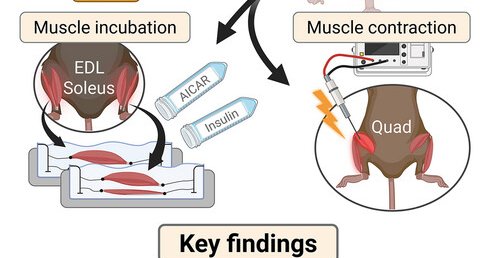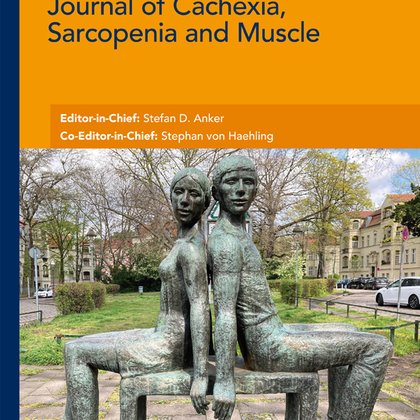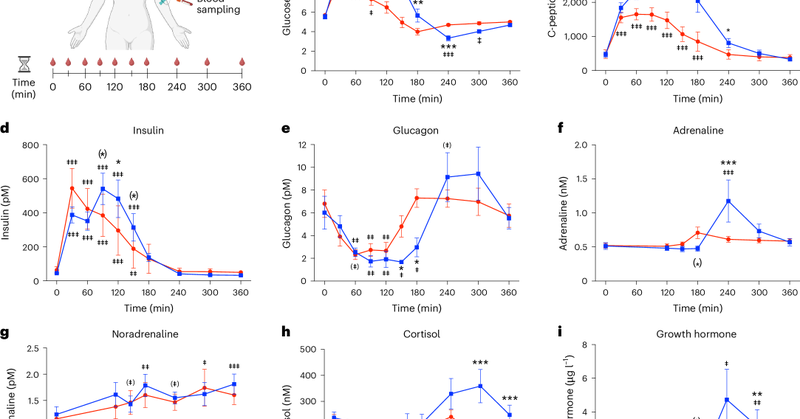
Thomas E. Jensen
@tejensen23
Followers
1K
Following
1K
Media
7
Statuses
231
Associate professor, Department of Nutrition, Exercise and Sports (NEXS), University of Copenhagen. Interested in skeletal muscle cell signaling and metabolism
Danmark
Joined August 2014
In our latest paper, we show that inducible sk. muscle AXIN1 /2 double KO have normal AMPK, mTOR and glucose uptake regulation, questioning previously proposed dependencies on this scaffold protein. Thanks to all co-authors for their contributions.
physoc.onlinelibrary.wiley.com
Abstract figure legend This study investigated the role of AXIN1 and AXIN2 in regulating skeletal muscle AMP-activated protein kinase (AMPK) and mechanistic target of rapamycin complex 1 (mTORC1)...
0
6
36
RT @Cell_Metabolism: New! Online now: NAD depletion in skeletal muscle does not compromise muscle function or accelerate aging https://t.c….
0
65
0
RT @LykkeSylow: 🐭❄️ Temperature impacts molecular changes linked to cancer & cachexia in mouse models -something to consider when interpret….
onlinelibrary.wiley.com
Background Cancer cachexia, affecting up to 80% of patients with cancer, is characterized by muscle and fat loss with functional decline. Preclinical research seeks to uncover the molecular mechani...
0
8
0
RT @proferikrichter: Our most comprehensive review ever! With twiterless Amira Klip and Philip Bilan. #nexs.A Comprehensive View of Muscle….
journals.physiology.org
Skeletal muscle is the main site of glucose deposition in the body during meals and the major glucose utilizer during physical activity. Although in both instances the supply of glucose from the...
0
37
0
RT @CraigAGoodman1: A Comprehensive View of Muscle Glucose Uptake: Regulation by Insulin, Contractile Activity and Exercise..
journals.physiology.org
Skeletal muscle is the main site of glucose deposition in the body during meals and the major glucose utilizer during physical activity. Although in both instances the supply of glucose from the...
0
18
0
RT @HornbergerLab: UW-Madison has lots of openings for PI’s that are doing research in the field of aging. Below is just one example. Pleas….
0
24
0
RT @MuscleBiology: Check out our latest paper challenging the long-standing belief that insulin elicits a transient H₂O₂ production. New in….
0
2
0
Driven by rising star @MuscleBiology with valuable contributions from. @proferikrichter @roberto_amv @samgallero @echouchani @AnitaReddy1 and more. Thanks for your efforts and to the Novo Nordisk Foundation for funding this endeavour.
0
0
4
Our new FASEBJ paper. We looked into mTOR Ser1261 phosphorylation in human and mouse muscle, proposed by Diane Fingar's lab to be first an Akt and then AMPK site regulating mTORC1 and 2 activity. Clearly AMPK site but impact on mTORC unclear in our hands
faseb.onlinelibrary.wiley.com
mTOR Ser1261 is an AMPK-dependent phosphosite in human and mouse skeletal muscle that responds to exercise but not insulin, plays an unclear role in mTORC1 regulation, and is not required for mTORC2...
3
22
89
RT @DPhaz: Really proud of @olivia_j_conway presenting her exciting work using subcellular proteomics to study insulin action in adipocytes….
0
2
0
RT @NEXSKU: In an article at @sciencenewsdk Professor Erik A. Richter from @UCPH_Research shares insigths into new research that highlights….
0
2
0
RT @LykkeSylow: Moving to BlueSky this very minute🙌 I hope you will follow me there for muscle science 🧬
0
2
0
RT @rbdamgaard: Come join us over on 🦋. Loads of scientist and researchers are building communities there. I went from 30 followers to 500….
0
3
0
Finally created a profile on #bluesky yesterday. Took me 5 min to set up and found the interface pleasently similar. I encourage my scientific peers and academic institutions to join to make this platform a viable alternative to the decreasing signal/noise on X.
1
2
6
RT @RasmusKjobsted: Have you ever doubted the importance of muscle health in type 2 diabetic risk? Check out our latest human study publish….
nature.com
Nature Metabolism - In Greenlandic Inuit, a TBC1D4 loss-of-function mutation increases type 2 diabetes risk by tenfold. Carriers show severe muscle insulin resistance, impaired glucose disposal and...
0
11
0
RT @MarcusDGon: Skeletal muscle from TBC1D4 p.Arg684Ter variant carriers is severely insulin resistant but exhibits normal metabolic respon….
nature.com
Nature Metabolism - In Greenlandic Inuit, a TBC1D4 loss-of-function mutation increases type 2 diabetes risk by tenfold. Carriers show severe muscle insulin resistance, impaired glucose disposal and...
0
6
0
RT @Matteo_Fiorenza: Reducing the mitochondrial oxidative burden alleviates lipid-induced muscle insulin resistance in humans. https://t.co….
science.org
Selective targeting of mitochondrial oxidative stress mitigates lipid-induced insulin resistance in humans.
0
20
0






